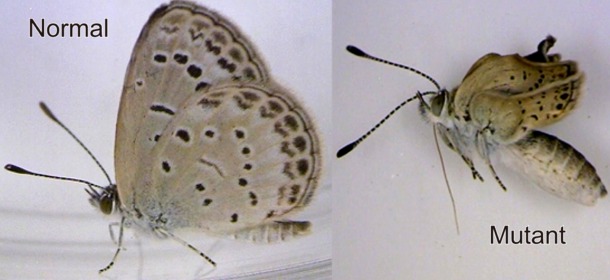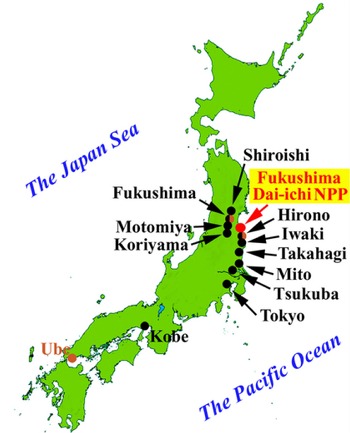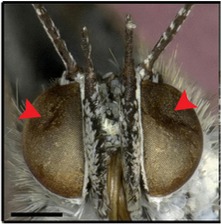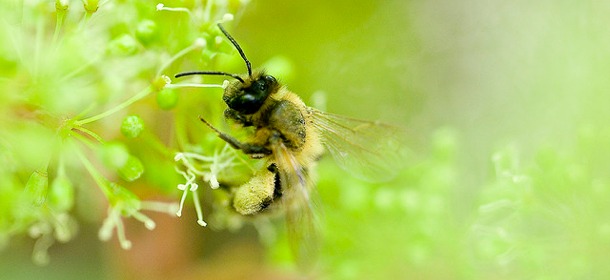Featured
Fukushima Mutant Butterflies Indicate a Devastated Ecosystem
Butterflies are being found mutated by Fukushima’s radiation. Insects are believed to be relatively unaffected by radiation. What does this bode for the people of Fukushima?
As the Fukushima nuclear disaster goes on, new disasters develop from it. We are now seeing mutant butterflies—and the situation grows worse with each succeeding generation. Worse, the percentages of affected butterflies has grown with succeeding generations.
The graphic above documents the severity. The butterfly on the left is a normal pale blue grass Zizeeria maha butterfly. The one on the right is a deformed mutant, obviously unable to survive.
The pale grass blue Zizeeria maha butterfly initially developed fairly mild abnormalities. However, the combination of damaged genes passed down to the next generation coupled with ongoing radiation has resulted in worse damage to their young—and the cycle continues with succeeding generations.
And Fukushima continues to spew radiation.
And, as Greg Palast reports, the Fukushima meltdowns were no accident. They knew beforehand that the plant could not survive a quake of that magnitude—and that such quakes were known to occur there.
The study, The biological impacts of the Fukushima nuclear accident on the pale grass blue butterfly , published in the journal Nature, not only documents deformities in the pale grass blue butterflies found in the vicinity of Fukushima in May two months after the disaster, it also verified that the same deformities can be induced through experimentation. This indicates that there’s little likelihood of the observed deformities in the environment being a chance thing.
The study’s lead author, Joji M. Otaki, states:
We have reached the firm conclusion that radiation released from the Fukushima Daiichi plant damaged the genes of the butterflies.
Deformities not only included smaller and misshapen wings, but also deformed eyes with concavities, deformed antenna, and missing, weakened, enlarged, and deformed markings.
Initially, about 12% of the butterflies suffered deformities, but these were passed on to the next generation, even when only one parent was affected by radiation—and rate of deformities went up to 18%. In the third generation, the deformity rate increased to 34%. On returning to collect more butterflies in September, they found 52% were deformed.
Joji M. Otaki has studied the pale blue grass butterflies in conjunction with global warming for ten years. So, continuing the study with Fukushima implications is a natural progression. However, because insects are generally noted as not being badly affected by nuclear radiation, the results were unexpected. He states:
It has been believed that insects are very resistant to radiation. In that sense, our results were unexpected. …
… But since we’ve seen these effects on butterflies, it’s easy to imagine that it would also have affected other species as well. It’s pretty clear that something has gone wrong with the ecosystem.
Effects of low level radiation is genetically transferred through generation, which suggests genetic damage. I think it’s clear that we see the effects passed on through generations.
Also unexpected is the increasing rate and worsening of mutations over generations. The study says that it means mutations are being passed on to offspring, a very worrisome situation that bodes ill for the species.
While Otaki says that we cannot draw conclusions about the effects of Fukushima’s radiation on humans, the fact is that insects are known to be significantly less affected by radiation than humans. We don’t know exactly how humans will be affected—but the expectation must be that humans will not fare as well as the butterflies.
So, one must wonder how the Japanese government can justify its lack of care for the people who lived in the vicinity of Fukushima. Clearly, the ecosystem is being devasted by Fukushima’s radiation. Why is it that the people of Fukushima are being treated as if they were nothing more than samples in a petrie dish?
Following is a brief report by Newsy:
Sources:
- The biological impacts of the Fukushima nuclear accident on the pale grass blue butterfly doi:10.1038/srep00570
- Fukushima: They Knew
- Fukushima ’caused mutant butterflies’ in Japan
- Study: Japan nuclear disaster caused mutated butterflies
- Fukushima ’caused mutant butterflies’
- Butterfly mutations found near Fukushima
- ‘Severe abnormalities’ found in Fukushima butterflies
Tagged deformed butterfly eyes, deformed butterfly wings, environment, fukushima butterflies, fukushima disaster, fukushima earthquake, fukushima nature, fukushima nuclear plant, indented butterfly eyes, nuclear disaster environment, nuclear radiation, pale grass blue butterfly, science, The biological impacts of the Fukushima nuclear accident on the pale grass blue butterfly, zizeeria maha


















